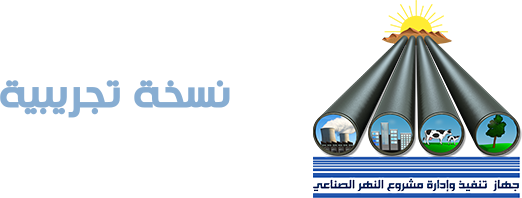The Technical Center for the Management of Underground Reserves is a technical center specialized in managing and monitoring the behavior of groundwater reservoirs feeding the systems of the Great Man-Made River, which is represented in the changes that occur on the levels of groundwater and the effects that follow on the surface of the earth and the natural and chemical changes that affect the storage and quality of water in these reservoirs.
The main objective of establishing the center is to carry out the necessary precautions and procedures that will secure the optimal investment of groundwater reservoirs and reduce the negative impacts associated with water production operations in huge quantities from these reservoirs.
The center was established within the administrative structure of the agency on 15/2/2006 based on the decision of the people's committee No. (8).
Actual tasks of the Underground Reservoir Management Technical Center:
Collecting, classifying and processing the geological and hydrogeological information derived from drilling wells, through which:
- The efficiency of underground reservoirs and the performance of wells is evaluated and an appropriate future policy for monitoring and operation is prepared.
- Preparing an integrated record of production wells and wells of the piezometric network as well as exploration wells that includes well data, hydrographs and contour maps in order to follow up, evaluate and manage the underground stock in a scientific way to ensure the continued safe withdrawal of groundwater in the long term
- Follow up the behavior of groundwater stocks as a result of continuous pumping, identify the places with the lowest levels of groundwater, and prepare appropriate operational plans for wells.
- Evaluating the operations of pumping wells and redistributing the producing wells according to the results of monitoring the groundwater stock in accordance with the Agency's policy of providing and distributing water and in a manner that guarantees the safety of wells and the groundwater storage
- Preparing periodic programs to monitor wells dug in areas with geological formations that contain high percentages of mud or involve clay interferences, as well as wells dug in areas of a special geological and hydrogeological nature in order to avoid early subsidence of the ground level and to ensure the safety of the facilities in the well fields.
- Following up on the chemical and physical changes that occur to the underground stock as a result of the continuous pumping and developing plans to reduce their impact.
- Supervising the drilling of wells and pursuing the maintenance and rehabilitation works that are needed for wells after long periods of operation.
- Calibrate and update previous mathematical models based on real information derived from monitoring the behavior of the underground stock.
- Establishing agreements at the entire district level that include other projects that exploit the same underground reservoirs, and preparing practical follow-up programs for monitoring in cooperation with these projects.
- Determining suitable sites for future expansions in well fields by identifying the best places in terms of topography, geology and hydrogeology for drilling new production and monitoring wells.
Methods for measuring the groundwater level:
- The manual method using a depth gauge of the groundwater level
- Method of electronically drawing data from wells using the numerical recorder.
 |
 |
|
 |
||



